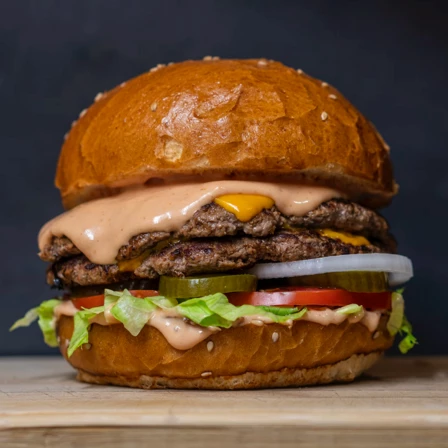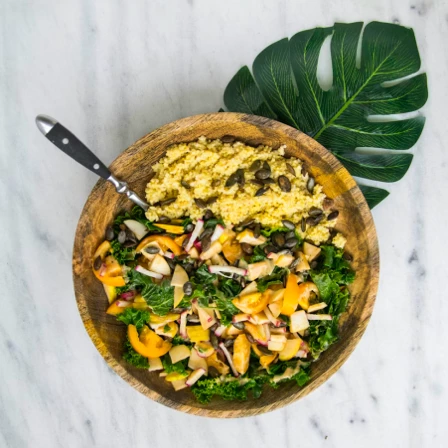Mastering Calorie Tracking: A Comprehensive Guide to Accuracy

Dr. Jane Smith
Registered Dietitian
Published
March 22, 2024

Stop guessing and start tracking. Learn professional techniques for weighing food, reading labels, and using apps to calculate calories with precision.
Table of Contents
Mastering Calorie Tracking: A Comprehensive Guide to Accuracy
One of the biggest hurdles in nutrition is the "portion distortion" reality. Studies show that people—even dietitians!—underestimate their calorie intake by 30-50% when estimating by eye. Accurate calculation is a skill that can be the difference between stalling and seeing results.
This guide will walk you through the tools and techniques to calculate food calories like a pro.
The Tools of the Trade
Before you start, equip yourself with the essentials:
- Digital Kitchen Scale: The single most important tool. Cups and spoons are volume measures and can vary wildly (e.g., a "cup" of chopped apple varies depending on how small you chop it). Grams are absolute.
- Tracking App: Apps like Caloria, MyFitnessPal, or Cronometer rely on massive databases to do the math for you.
- Measuring Spoons: For liquids (oils, sauces) where weighing might be impractical.
How to Read a Nutrition Label
Nutrition labels are your roadmap. Focus on these key areas:
- Serving Size: This is critical. All the numbers below it apply to this specific amount. If the package has 2 servings and you eat the whole bag, you must double the calories.
- Calories: The energy per serving.
- Macronutrients: Check the grams of fat, carbs, and protein to ensure they align with your goals.
The Weighing Method (The Gold Standard)
To get 100% accuracy, follow this workflow:
- Place your plate or bowl on the scale.
- Press "Tare" or "Zero" to reset the scale to 0g.
- Add your first ingredient (e.g., rice). Note the weight.
- Search for "Cooked White Rice" in your app and enter the weight.
- Press "Tare" again.
- Add your next ingredient (e.g., chicken breast). Note the weight.
- Repeat until your meal is built.
Raw vs. Cooked Weights
- Meats: Weighing raw is most accurate because cooking removes water, changing the weight but not the calorie count significantly. If you weigh cooked, search for "Grilled Chicken Breast" entries, not just "Chicken Breast."
- Grains (Rice/Pasta): Dry weight is best. Rice expands 3x when cooked; pasta expands 2-2.5x. 100g of dry rice has ~360 calories, while 100g of cooked rice has ~130 calories. Confusing these is a common error.
Calculating Homemade Meals (Batch Cooking)
Cooking a big pot of chili? Here’s how to track a single serving:
- Weigh all raw ingredients before cooking and log them into a "Recipe" feature in your app.
- Weigh the finished dish (the total weight of the chili).
- Weigh your individual portion.
- Calculate: (Your Portion Weight / Total Dish Weight) × Total Recipe Calories.
Example: The whole pot of chili is 2,000g and contains 3,000 calories. You take a 400g bowl. (400 / 2000) = 0.2 or 20%. 20% of 3,000 calories = 600 calories.
Common Tracking Pitfalls
- "Volumetric" Errors: A tablespoon of peanut butter can easily be 25g (150 cal) instead of the standard 16g (95 cal) if you heap it. Always weigh calorie-dense foods.
- Oils and Sprays: A "splash" of olive oil can be 120 calories. Measure it. Even "0 calorie" sprays have trace calories that add up if sprayed for 10 seconds.
- Licking the Spoon: Tasting while cooking counts!
- Restaurant Meals: These are notoriously calorie-dense due to hidden butter and oil. A safe bet is to find a similar chain restaurant dish in your app or add 20% to your best estimate.
Conclusion
It might seem tedious at first, but weighing and tracking food quickly becomes second nature. You don't have to do it forever. Tracking for just 2-4 weeks can teach you what proper portion sizes look like, giving you the intuition to eat intuitively for the long term.
Keywords: how to track calories, food scale guide, reading nutrition labels, weighing food raw vs cooked, calorie tracking apps, portion control.


